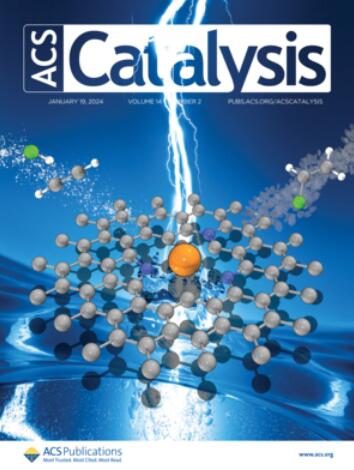Molecular Design of Perylene Diimide Derivatives for Photocatalysis
IF 11.3
1区 化学
Q1 CHEMISTRY, PHYSICAL
引用次数: 0
Abstract
Perylene diimides (PDIs) and their derivatives represent a kind of most promising photocatalytic materials due to their strong visible light absorption, ease of functionalization, excellent thermal/photostability, as well as tunable electronic structures and energy levels. However, several challenges persist in the development of PDI photocatalysts, including low electron–hole separation efficiency, slow charge transfer, and rapid carrier recombination. In this perspective, we focus on enhancing the performance of PDI photocatalysts through a molecular design. We provide a comprehensive overview of various improvement strategies: (1) precise modulation of molecular dipole moments by altering the polarity of side chains to strengthen the built-in electric field, (2) utilization of steric hindrance and noncovalent interactions of side chains to construct nanoscale, highly ordered supramolecular nanostructures, (3) modification of the perylene core to adjust molecular energy levels and increase the number of active sites, (4) integration of PDI with various semiconductors or metals to form composite systems that enhance the interfacial built-in electric field or create extensive delocalized charge channels, and (5) selection of suitable linker groups to build polymer photocatalysts with large dipole moments. These strategies can facilitate the separation and migration of photogenerated carriers in PDI photocatalysts, eventually boosting their photocatalytic efficiency. The relationship between molecular structure and photocatalytic performance, particularly in the context of photocatalytic degradation and water splitting, is examined in detail. Finally, the future prospects and challenges of PDI photocatalysts are thoroughly discussed.

光催化用苝二亚胺衍生物的分子设计
苝二酰亚胺(pdi)及其衍生物因其强可见光吸收、易于功能化、优异的热/光稳定性以及可调谐的电子结构和能级而成为一种最有前途的光催化材料。然而,PDI光催化剂的发展仍面临着电子空穴分离效率低、电荷转移慢、载流子复合快等问题。从这个角度来看,我们的重点是通过分子设计来提高PDI光催化剂的性能。我们提供了各种改进策略的全面概述:(1)通过改变侧链的极性来精确调节分子偶极矩,以增强内置电场;(2)利用侧链的位阻和非共价相互作用来构建纳米级、高度有序的超分子纳米结构;(3)修饰苝核心以调节分子能级并增加活性位点的数量。(4)将PDI与各种半导体或金属集成,形成复合体系,增强界面内置电场或创建广泛的离域电荷通道;(5)选择合适的连接基团,构建具有大偶极矩的聚合物光催化剂。这些策略可以促进光生载体在PDI光催化剂中的分离和迁移,最终提高其光催化效率。分子结构和光催化性能之间的关系,特别是在光催化降解和水分解的情况下,进行了详细的检查。最后,对PDI光催化剂的发展前景和面临的挑战进行了深入的讨论。
本文章由计算机程序翻译,如有差异,请以英文原文为准。
求助全文
约1分钟内获得全文
求助全文
来源期刊

ACS Catalysis
CHEMISTRY, PHYSICAL-
CiteScore
20.80
自引率
6.20%
发文量
1253
审稿时长
1.5 months
期刊介绍:
ACS Catalysis is an esteemed journal that publishes original research in the fields of heterogeneous catalysis, molecular catalysis, and biocatalysis. It offers broad coverage across diverse areas such as life sciences, organometallics and synthesis, photochemistry and electrochemistry, drug discovery and synthesis, materials science, environmental protection, polymer discovery and synthesis, and energy and fuels.
The scope of the journal is to showcase innovative work in various aspects of catalysis. This includes new reactions and novel synthetic approaches utilizing known catalysts, the discovery or modification of new catalysts, elucidation of catalytic mechanisms through cutting-edge investigations, practical enhancements of existing processes, as well as conceptual advances in the field. Contributions to ACS Catalysis can encompass both experimental and theoretical research focused on catalytic molecules, macromolecules, and materials that exhibit catalytic turnover.
 求助内容:
求助内容: 应助结果提醒方式:
应助结果提醒方式:


